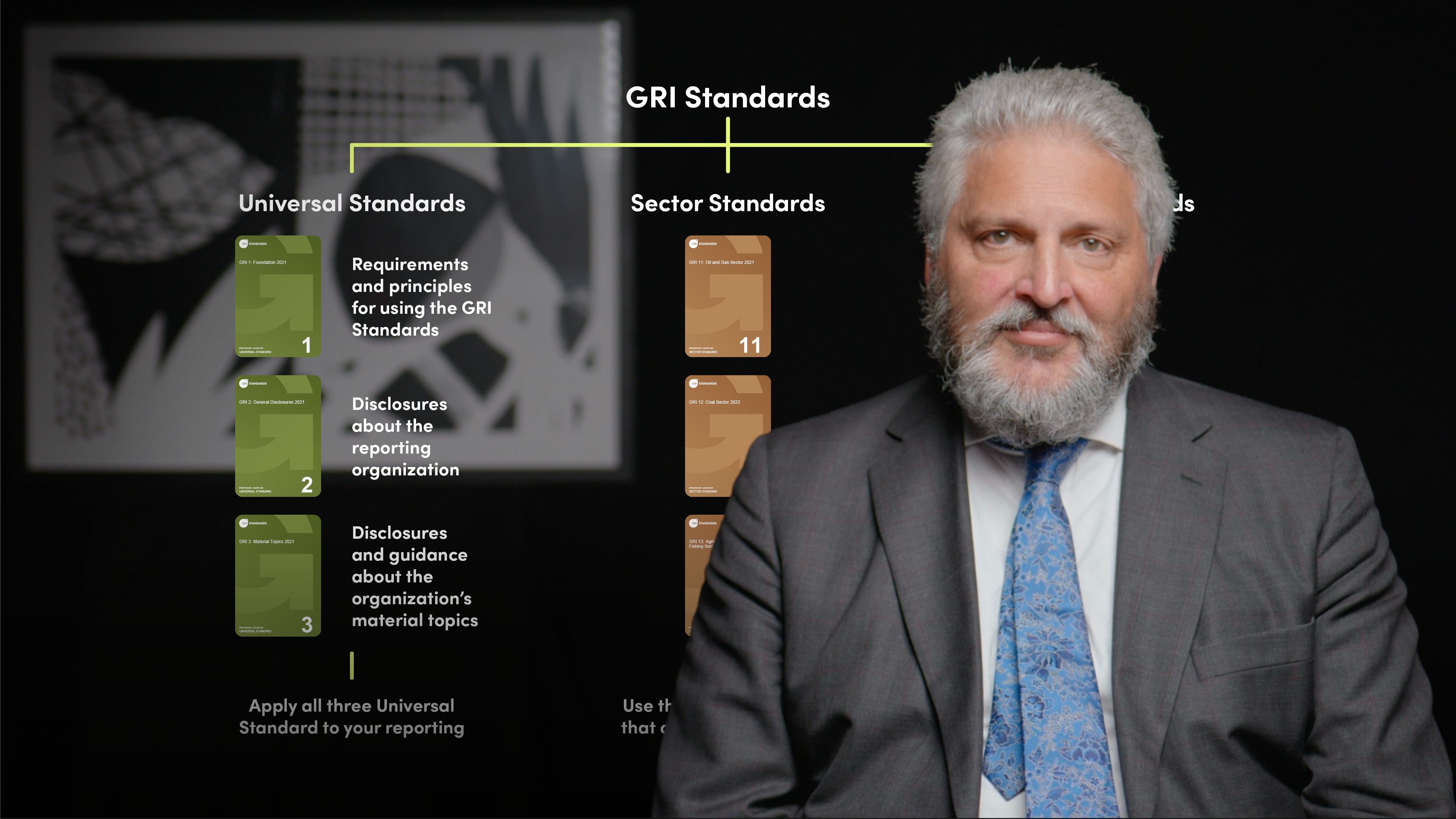
Introduction to the GRI

Keith Mullin
35 years: Capital markets editorial
In this video, Keith explains GRI, a non-profit organisation dedicated to improving sustainability reporting. He provides a brief history of the GRI, its mission, and how it sets sustainability reporting standards. He also covers the types of standards the GRI offers, including universal standards, sector standards, and topic standards. Additionally, he touches on the new updates to the Universal Standards, which include reporting on human rights and environmental due diligence.

In this video, Keith explains GRI, a non-profit organisation dedicated to improving sustainability reporting. He provides a brief history of the GRI, its mission, and how it sets sustainability reporting standards. He also covers the types of standards the GRI offers, including universal standards, sector standards, and topic standards. Additionally, he touches on the new updates to the Universal Standards, which include reporting on human rights and environmental due diligence.
Subscribe to watch
Access this and all of the content on our platform by signing up for a 7-day free trial.

Introduction to the GRI
12 mins 38 secs
Key learning objectives:
Outline the Global Reporting Initiative
Understand the GRI standards and who is using them
Describe how the GRI is different from the TCFD Recommendations and SASB Standards
Overview:
The Global Reporting Initiative, GRI, describes itself as the global standards setter for impact reporting, and maintains what it claims are the world’s most comprehensive sustainability reporting standards. It caters to a wider audience than some of the other reporting initiatives and it has produced three sets of interconnected standards; universal standards, sector standards and topic standards. Their standards enable organisations to disclose their most significant impacts on the economy, environment and people.
Subscribe to watch
Access this and all of the content on our platform by signing up for a 7-day free trial.
What is the Global Reporting Initiative (GRI)?
Founded in 1997, the GRI is a standards setter for impact reporting which enables organisations to disclose their most significant impacts on the economy, environment and people, including impacts on their human rights and how organisations manage those impacts, enhancing transparency on impacts and increasing accountability.
The GRI was formed by Ceres and the Tellus Institute with the support of the UNEP in the wake of the Exxon Valdez oil spill, which saw 11 million gallons of oil being spilled.
What are the GRI Standards and who uses them?
The first version of the GRI Guidelines (G1) was published in 2000, followed by G2 in 2002, G3 in 2006 and G4 in 2013. In 2016 they switched from setting guidelines to sustainability reporting standards.
GRI is building out a set of three interconnected standards:
- Universal Standards: Apply to all organisations
- Sector Standards: Apply to specific sectors
- Topic Standards: Focus on specific topics and list disclosures relevant to each topic
The Universal Standards consist of 3 sets of standards:
GRI 1: Foundation. Introduces the purpose and system of GRI reporting, setting the key concepts, requirements and principles that all organisations must comply with to report in accordance with the GRI Standards.
GRI 2: General Disclosures. Includes updated and consolidated disclosures on reporting practices; activities and workers; governance; strategy, policies and practices; and stakeholder engagement.
GRI 3: Material Topics. Delivers step-by-step guidance and revised disclosures on how the organisation determines, lists and manages each of the material topics.
The GRI is aiming to develop Sector Standards for 40 sectors and has started with those that have the highest impact.
The GRI Standards cover the requirements that companies must report to achieve full GRI alignment.
According to KPMG, ⅔ of 5,200 leading companies from 52 countries use GRI for their reporting, it is the most widely used reporting framework globally.
How is the GRI different from the other reporting initiatives?
The main difference between the GRI and SASB compared to the TCFD, is that the TCFD issues recommendations, whereas the other two initiatives issue standards for companies to comply with.
Subscribe to watch
Access this and all of the content on our platform by signing up for a 7-day free trial.

Keith Mullin
There are no available Videos from "Keith Mullin"


























